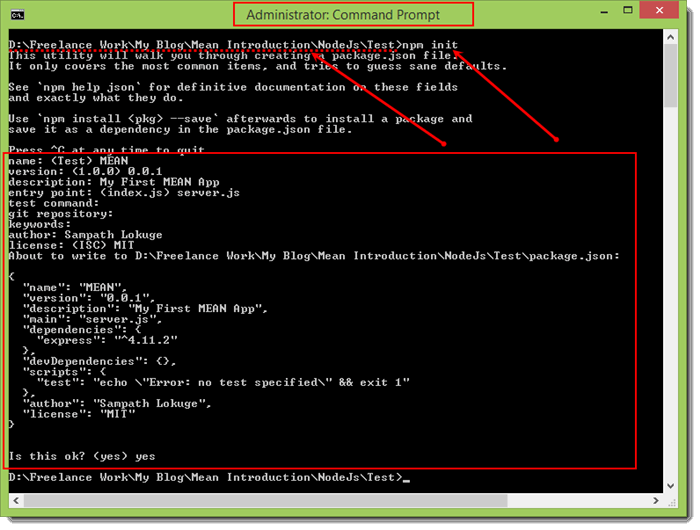

- BITNAMI MEAN STACK ENVIRONMENT HOW TO
- BITNAMI MEAN STACK ENVIRONMENT INSTALL
- BITNAMI MEAN STACK ENVIRONMENT UPDATE
- BITNAMI MEAN STACK ENVIRONMENT REGISTRATION
Start the API using the PM2 process manager with command sudo pm2 start server.js. BITNAMI MEAN STACK ENVIRONMENT INSTALL
Navigate into the back-end directory and install all required npm packages with the command cd /opt/back-end & sudo npm install.Clone the Node.js + MongoDB API project into the /opt/back-end directory with the command sudo git clone /opt/back-end.
BITNAMI MEAN STACK ENVIRONMENT HOW TO
While connected to the new AWS EC2 instance in the terminal window, run the following command:įor instructions on how to securely connect to the remote MongoDB server from your local machine using Mongo Shell or MongoDB Compass see Connect to remote MongoDB on AWS EC2 simply and securely via SSH tunnel.įollow these steps to setup the Node.js API on the server and configure NGINX to enable access to it. The below command executes a script to automatically setup and configure a production ready MEAN Stack web server on Ubuntu that includes Node.js, MongoDB, PM2, NGINX and UFW.įor more details about how the script works see Setup Node.js + MongoDB Production Server on Ubuntu. Setup Web Server with Node.js + MongoDB + NGINX

If you're using Windows you can connect to your instance via SSH using the PuTTY SSH client, for instructions see Connect Using PuTTY in the AWS docs. Enter yes to the prompt "Are you sure you want to continue connecting (yes/no)?" to add the url to your list of known hosts.Copy the "Public DNS (IPv4)" property from the instance description tab in the AWS Console, then connect to the instance from the terminal window with the command ssh -i e.g.chmod 400 ~/Downloads/my-aws-key.pem, the key must not be publicly viewable for SSH to work.
BITNAMI MEAN STACK ENVIRONMENT UPDATE
Open a terminal window and update the permissions of the private key file with the command chmod 400 e.g. Once the EC2 instance reaches a running state you can connect to it via SSH using the private key downloaded in the previous step. Click "Launch Instances", then scroll to the bottom of the page and click "View Instances" to see details of the new Ubuntu EC2 instance that is launching. "my-aws-key") and click "Download Key Pair" to download the private key, you will use this to connect to the server via SSH. Select "Create a new key pair", enter a name for the key pair (e.g. Configure Security Group - Add a new rule to allow HTTP traffic then click "Review and Launch". Choose Instance Type - Select the "t2.micro" (Free tier eligible) instance type and click "Configure Security Group" in the top menu. Choose AMI - Check the "Free tier only" checkbox, enter "Ubuntu" in search box and press enter, then select the "Ubuntu Server 18.04" Amazon Machine Image (AMI). If you don't have an account yet click the "Create a Free Account" button and follow the prompts. Sign into the AWS Management Console at. Configure NGINX to serve API and front-endīefore doing anything we need a server that we can work on, follow these steps to spin up a new Ubuntu 18.04 server instance on AWS EC2. Setup server with Node.js + MongoDB + NGINX. BITNAMI MEAN STACK ENVIRONMENT REGISTRATION
NodeJS + MongoDB - Simple API for Authentication, Registration and User Management. Angular 8 - User Registration and Login Tutorial & Example. For more in-depth information about the Angular app or Node.js api used in this post, check out the following tutorials which cover them in detail: This tutorial will be focused on setting up the server on AWS EC2, then deploying and configuring the front-end and back-end pieces of the MEAN stack app to work together. Other variations of the stack include the MERN Stack that has a React front-end, and the MEVN Stack that has a Vue.js front-end. In this tutorial we're going to setup a production ready web server from scratch on the Amazon EC2 (Elastic Compute Cloud) service, then deploy a custom MEAN Stack application to it that supports user registration and authentication.Ī MEAN Stack application is made up of a front-end app built with Angular that connects to a back-end api built with Node.js + Express + MongoDB, hence the name MEAN Stack (Mongo, Express, Angular, Node).






 0 kommentar(er)
0 kommentar(er)
